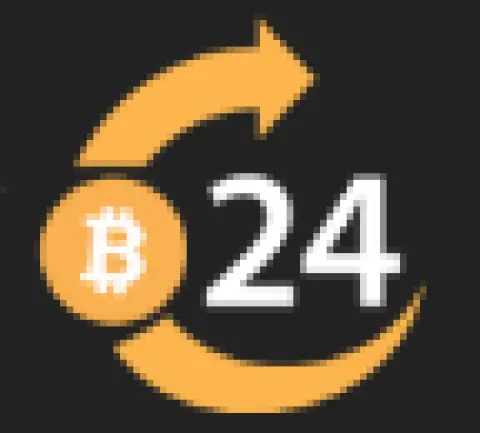Table of Contents:
Introduction to the Best Ethereum Wallets
Ethereum wallets are more than just tools for storing cryptocurrency—they are gateways to the vast Ethereum ecosystem, enabling users to interact with decentralized applications (DApps), participate in DeFi protocols, and securely manage their digital assets. With the growing adoption of Ethereum, the demand for reliable wallets has surged, making it essential to identify the best options tailored to your specific needs.
Unlike traditional wallets, Ethereum wallets provide access to your private keys, which are critical for authorizing transactions and ensuring full control over your funds. The market offers a wide variety of wallet types, each designed to cater to different user preferences, from beginners to seasoned investors. Selecting the right wallet is not just about convenience; it’s about balancing security, usability, and compatibility with Ethereum’s ever-evolving ecosystem.
In this guide, we’ll explore the most trusted Ethereum wallets available today, highlighting their unique features, strengths, and ideal use cases. Whether you’re looking for robust offline security, seamless integration with DApps, or a user-friendly interface for daily transactions, this comprehensive list will help you make an informed decision.
Why Choosing the Right Ethereum Wallet Matters
Choosing the right Ethereum wallet is a critical decision that directly impacts the security, accessibility, and functionality of your digital assets. With Ethereum being a cornerstone of the blockchain ecosystem, your wallet acts as the bridge between you and the decentralized world. A poorly chosen wallet can expose you to unnecessary risks, such as hacking, loss of funds, or limited access to key blockchain features.
Security is the foremost reason why selecting the right wallet matters. Not all wallets offer the same level of protection against threats like phishing attacks or malware. Advanced security features, such as multi-signature support and hardware integrations, can make a significant difference in safeguarding your assets.
Another key factor is compatibility. The Ethereum ecosystem is vast, encompassing thousands of ERC-20 tokens, NFTs, and decentralized applications. A wallet that seamlessly supports these assets and integrates with DeFi platforms ensures you can fully leverage Ethereum’s potential without unnecessary limitations.
Additionally, the user experience plays a pivotal role. A wallet with an intuitive interface and straightforward setup process can save time and reduce errors, especially for beginners. For advanced users, features like custom gas fee settings or detailed transaction histories can enhance control and transparency.
Ultimately, the right Ethereum wallet empowers you to interact with the blockchain confidently and efficiently. It’s not just a tool—it’s your digital stronghold in an ever-expanding decentralized landscape.
Understanding the Different Categories of Ethereum Wallets
Ethereum wallets can be divided into distinct categories, each tailored to meet specific user needs and preferences. Understanding these categories is essential for selecting a wallet that aligns with your goals, whether you prioritize security, convenience, or advanced blockchain interactions.
1. Hardware Wallets
Hardware wallets are physical devices designed to store your private keys offline. They are considered the gold standard for security, as they remain isolated from online threats. These wallets are ideal for long-term investors or individuals holding significant amounts of Ethereum. While they offer unparalleled protection, they require careful handling to avoid physical damage or loss.
2. Software Wallets
Software wallets come in various forms, including desktop applications, mobile apps, and browser extensions. They are highly accessible and cater to users who frequently interact with Ethereum-based platforms, such as decentralized exchanges or staking protocols. However, their online nature makes them more vulnerable to cyberattacks, so users must implement additional security measures like strong passwords and two-factor authentication.
3. Paper Wallets
Paper wallets involve printing your private and public keys on a physical document. This method provides offline security and eliminates exposure to digital threats. However, paper wallets are less practical for regular transactions and require meticulous storage to prevent damage or loss. They are best suited for advanced users who understand the intricacies of key management.
4. Custodial Wallets
Custodial wallets are managed by third-party providers, such as cryptocurrency exchanges. These wallets are convenient for beginners, as the provider handles private key management. However, this convenience comes at the cost of control, as users must trust the provider to secure their funds. Custodial wallets are suitable for those who prioritize ease of use over complete ownership.
5. Non-Custodial Wallets
Non-custodial wallets give users full control over their private keys, ensuring complete ownership of their assets. These wallets are favored by those who value decentralization and self-sovereignty. They often integrate with DeFi platforms and DApps, making them versatile tools for blockchain enthusiasts.
By understanding these categories, you can better assess which type of Ethereum wallet aligns with your security requirements, transaction frequency, and overall blockchain goals.
Top Hardware Wallets for Ethereum: Security and Durability
When it comes to safeguarding your Ethereum holdings, hardware wallets stand out as the most secure option. These physical devices are specifically designed to keep your private keys offline, making them virtually immune to online threats like hacking or phishing. Their durability and robust security features make them a preferred choice for long-term investors and those managing substantial amounts of Ethereum.
1. Ledger Nano X
The Ledger Nano X is a highly regarded hardware wallet, offering a perfect balance of security and usability. With Bluetooth functionality, it allows users to manage their Ethereum and ERC-20 tokens on the go via a mobile app. Its secure element chip ensures private keys are stored in an isolated environment, while support for over 5,500 cryptocurrencies makes it a versatile choice for diverse portfolios.
2. Trezor Model T
The Trezor Model T is another top-tier hardware wallet, known for its intuitive touchscreen interface and open-source firmware. It supports Ethereum and a wide range of tokens, providing advanced security features like Shamir Backup for enhanced recovery options. Its compatibility with popular wallet interfaces like MetaMask further enhances its utility for Ethereum users.
3. SafePal S1
For those seeking a budget-friendly yet secure option, the SafePal S1 is an excellent choice. This wallet uses air-gapped technology, meaning it operates entirely offline and communicates via QR codes. Its compact design and support for Ethereum, alongside multiple blockchains, make it a practical option for users who value portability without compromising security.
4. Keystone Pro
The Keystone Pro (formerly Cobo Vault) is a premium hardware wallet designed with durability in mind. Its metal body is resistant to physical damage, and it includes a fingerprint scanner for added security. With a focus on Ethereum and DeFi interactions, it integrates seamlessly with wallet apps and DApps, making it ideal for tech-savvy users.
Why Hardware Wallets Excel
Hardware wallets excel not only in security but also in their ability to protect against human error. By keeping private keys offline, they eliminate risks associated with malware or compromised devices. Their physical durability ensures they can withstand wear and tear, making them a reliable long-term solution for Ethereum storage.
Ultimately, selecting the right hardware wallet depends on your specific needs, whether it’s advanced features, portability, or budget considerations. These wallets represent the pinnacle of Ethereum security, giving you peace of mind as you navigate the blockchain landscape.
Best Software Wallets for Ease of Use and Accessibility
Software wallets are the go-to choice for users who prioritize ease of use and accessibility. Designed to be intuitive and versatile, these wallets are ideal for everyday transactions, interacting with decentralized applications (DApps), and managing Ethereum-based assets on the fly. Whether you’re a beginner exploring Ethereum or an experienced user engaging with DeFi platforms, software wallets offer a practical solution for seamless blockchain interactions.
MetaMask
MetaMask is one of the most popular Ethereum software wallets, available as a browser extension and mobile app. Its user-friendly interface makes it easy to store, send, and receive Ethereum and ERC-20 tokens. What sets MetaMask apart is its deep integration with DApps and DeFi platforms, allowing users to connect to decentralized exchanges, NFT marketplaces, and staking protocols with just a few clicks. Additionally, it offers customizable gas fees, giving users control over transaction costs.
Trust Wallet
Trust Wallet is a mobile-first wallet known for its simplicity and wide-ranging compatibility. Supporting Ethereum and thousands of other cryptocurrencies, it’s an excellent choice for users managing diverse portfolios. The wallet includes a built-in DApp browser, enabling direct access to decentralized platforms without leaving the app. Trust Wallet also emphasizes security, with private keys stored locally on the user’s device.
Exodus
Exodus combines functionality with a visually appealing design, making it a favorite among beginners. Available on desktop and mobile, it supports Ethereum and multiple other assets. Its integrated exchange feature allows users to swap cryptocurrencies directly within the wallet. Exodus also provides 24/7 customer support, which is a rare and valuable feature in the crypto wallet space.
Rainbow Wallet
Rainbow Wallet is a mobile wallet tailored specifically for Ethereum users. It offers a sleek, modern interface and focuses on simplifying interactions with Ethereum’s ecosystem. Rainbow is particularly popular among NFT enthusiasts, as it provides detailed NFT management tools. Its emphasis on usability makes it a great choice for those new to Ethereum.
Key Advantages of Software Wallets
- Accessibility: Available on multiple devices, including smartphones and desktops, ensuring you can manage your assets anytime, anywhere.
- Integration: Seamlessly connects with DApps, DeFi platforms, and NFT marketplaces, enabling a broad range of blockchain activities.
- Ease of Use: Designed with intuitive interfaces, making them suitable for users of all experience levels.
While software wallets excel in convenience, it’s crucial to implement strong security practices, such as enabling two-factor authentication and safeguarding recovery phrases. By choosing a reliable software wallet, you can unlock the full potential of Ethereum while maintaining control over your digital assets.
Paper Wallets: A Rare but Secure Option for Advanced Users
Paper wallets, while less common in today’s crypto landscape, remain a highly secure option for advanced users who prioritize offline storage. These wallets consist of a physical document that contains your Ethereum private and public keys, often represented as QR codes for easier access. By completely eliminating any digital footprint, paper wallets offer unparalleled protection against online threats, making them an attractive choice for those with a deep understanding of private key management.
Why Paper Wallets Are Considered Secure
The primary advantage of a paper wallet lies in its offline nature. Since the keys are never stored on an internet-connected device, they are immune to hacking, phishing, or malware attacks. This makes paper wallets particularly suitable for long-term storage of Ethereum, especially for users who don’t require frequent access to their funds.
Creating a Paper Wallet: A Delicate Process
- Offline Generation: To ensure maximum security, paper wallets should be generated on a device that is disconnected from the internet. Specialized tools or open-source software can help create the keys securely.
- Printing: Use a secure, non-networked printer to produce the physical copy of your wallet. Avoid saving the document digitally to prevent exposure.
- Backup: Create multiple copies of the wallet and store them in separate, secure locations to mitigate the risk of physical damage or loss.
Challenges and Risks
Despite their security benefits, paper wallets come with significant challenges. Physical durability is a major concern—paper can be easily damaged by water, fire, or general wear and tear. Additionally, if the wallet is lost or destroyed without a backup, recovering the funds becomes impossible. For this reason, paper wallets demand meticulous handling and storage practices, such as lamination or storage in fireproof safes.
Best Practices for Advanced Users
- Encrypt the Keys: Consider encrypting the private key before printing it to add an extra layer of security.
- Store in Secure Locations: Use safety deposit boxes or similar secure environments to protect your wallet from theft or environmental damage.
- Combine with Other Methods: For added flexibility, pair a paper wallet with a software wallet for easier access to a portion of your funds while keeping the majority offline.
In conclusion, paper wallets are a niche but highly secure option for Ethereum storage. They are best suited for advanced users who are confident in their ability to manage private keys and take the necessary precautions to protect their physical wallet. While they may not offer the convenience of modern wallets, their offline nature makes them a robust choice for safeguarding significant holdings over the long term.
Essential Features of High-Quality Ethereum Wallets
High-quality Ethereum wallets are distinguished by a set of essential features that enhance security, usability, and functionality. These features ensure a seamless experience for users while safeguarding their digital assets in an ever-evolving blockchain environment. Below are the critical attributes to look for when evaluating an Ethereum wallet:
- Private Key Ownership: A reliable wallet must grant users full control over their private keys. This ensures that only the wallet owner has access to their funds, eliminating reliance on third parties.
- Multi-Layer Security: Advanced wallets incorporate features like biometric authentication, PIN codes, and two-factor authentication (2FA) to add extra layers of protection against unauthorized access.
- Cross-Platform Compatibility: A high-quality wallet should function seamlessly across multiple devices, such as desktops, mobile phones, and tablets, allowing users to manage their assets conveniently from anywhere.
- Support for ERC-20 and ERC-721 Tokens: Ethereum wallets should be compatible with both fungible tokens (ERC-20) and non-fungible tokens (ERC-721), enabling users to manage a diverse range of assets within the Ethereum ecosystem.
- Customizable Gas Fees: The ability to adjust gas fees is crucial for users who want to optimize transaction costs, especially during periods of network congestion.
- Integration with DApps: Top-tier wallets offer seamless integration with decentralized applications, allowing users to interact with DeFi platforms, NFT marketplaces, and other blockchain-based services directly from the wallet interface.
- Backup and Recovery Options: A wallet should provide robust recovery mechanisms, such as seed phrases or encrypted backups, to ensure users can regain access to their funds in case of device loss or failure.
- Open-Source Code: Transparency is a hallmark of trustworthy wallets. Open-source wallets allow the community to audit the code, ensuring there are no hidden vulnerabilities or malicious elements.
- Multi-Currency Support: While Ethereum is the primary focus, a versatile wallet should support other blockchain networks and tokens, offering users flexibility in managing their crypto portfolios.
- Regular Updates: Frequent software updates are a sign of a wallet’s commitment to security and innovation. These updates address vulnerabilities and introduce new features to keep the wallet aligned with the latest blockchain advancements.
By prioritizing these features, users can ensure their Ethereum wallet not only meets their immediate needs but also adapts to the dynamic nature of the blockchain space. A wallet that combines security, compatibility, and user-centric design is essential for navigating Ethereum’s diverse ecosystem with confidence.
Evaluating Wallets Based on Security and Functionality
When evaluating Ethereum wallets, two critical factors stand out: security and functionality. A wallet that excels in both areas provides users with peace of mind while enabling seamless interaction with the Ethereum ecosystem. Here’s how to assess these aspects effectively:
Security: Protecting Your Assets
- Encryption Standards: Ensure the wallet uses advanced encryption protocols to safeguard private keys and sensitive data. AES-256 encryption, for example, is a benchmark for robust security.
- Cold Storage Options: Wallets that offer offline storage or integration with hardware wallets add an extra layer of protection against online threats.
- Phishing Resistance: Look for features like anti-phishing phrases or warnings that alert users to potential scams or malicious websites.
- Secure Backup Mechanisms: Evaluate how the wallet handles recovery options. Seed phrases should be generated securely and stored offline to prevent unauthorized access.
- Reputation and Audits: Research whether the wallet has undergone independent security audits. A strong track record and positive user reviews are indicators of reliability.
Functionality: Enhancing User Experience
- Transaction Speed: Some wallets optimize transaction processing times, especially during network congestion, ensuring users can complete transfers efficiently.
- Smart Contract Interaction: Advanced wallets allow users to interact directly with Ethereum smart contracts, providing greater control over DeFi and DApp activities.
- Multi-Account Management: The ability to manage multiple Ethereum addresses within a single wallet streamlines asset organization, particularly for users with diverse holdings.
- Token Customization: High-functionality wallets enable users to manually add custom tokens that may not be listed by default, ensuring comprehensive portfolio management.
- Accessibility Features: Features like dark mode, language options, and support for assistive technologies enhance usability for a broader audience.
By carefully assessing wallets based on these criteria, users can identify solutions that align with their priorities, whether it’s maximum security for long-term storage or advanced functionality for active Ethereum interactions. A balanced approach ensures that your wallet not only protects your assets but also empowers you to make the most of Ethereum’s capabilities.
Top Ethereum Wallets for DeFi and DApp Compatibility
Ethereum wallets designed for DeFi and DApp compatibility play a crucial role in unlocking the full potential of the Ethereum ecosystem. These wallets are tailored to seamlessly interact with decentralized exchanges, lending platforms, NFT marketplaces, and other blockchain-based applications. Below are some of the top wallets that excel in this area, offering both advanced features and user-friendly functionality.
- MetaMask: Renowned for its deep integration with DeFi platforms, MetaMask allows users to connect to DApps directly through their browser or mobile app. Its customizable gas fee settings and support for multiple Ethereum networks make it a versatile choice for DeFi enthusiasts.
- Argent: Argent stands out with its focus on DeFi accessibility and security. It offers one-tap access to popular protocols like Aave and Uniswap, along with features like social recovery and fee subsidies, making it ideal for users new to DeFi.
- Gnosis Safe: This wallet is specifically designed for managing collective funds, making it a popular choice for DAOs and group DeFi investments. Its multi-signature functionality ensures that transactions require approval from multiple parties, enhancing security.
- Rainbow Wallet: Known for its sleek design, Rainbow Wallet simplifies the process of interacting with DApps and managing NFTs. It provides real-time token price tracking and easy integration with DeFi platforms, making it a favorite among NFT collectors and DeFi users alike.
- Frame: Frame is a desktop wallet that focuses on seamless DApp interaction. It operates as a native Ethereum wallet and supports multiple networks, offering a smooth experience for advanced users who frequently engage with DeFi protocols.
Key Features to Look For:
- Direct DApp Integration: The ability to connect to DApps without third-party intermediaries ensures a streamlined user experience.
- Multi-Network Support: Wallets that support Ethereum Layer 2 solutions and sidechains, such as Arbitrum or Optimism, provide faster and cheaper transactions for DeFi activities.
- Token Management: Advanced wallets allow users to easily manage LP (liquidity provider) tokens, staked assets, and rewards from DeFi platforms.
By choosing a wallet optimized for DeFi and DApp compatibility, users can maximize their participation in Ethereum’s dynamic ecosystem. These wallets not only simplify access to decentralized services but also provide the tools needed to navigate the complexities of DeFi with confidence.
Comparing Popular Ethereum Wallets: Pros and Cons
Choosing the right Ethereum wallet often comes down to comparing the strengths and weaknesses of popular options. Each wallet offers unique features, but they also come with limitations that may influence your decision based on your specific needs. Below is a comparison of some of the most widely used Ethereum wallets, highlighting their pros and cons to help you make an informed choice.
-
MetaMask
- Pros: Deep integration with DeFi platforms and DApps, customizable gas fees, and multi-network support (e.g., Ethereum mainnet, Layer 2 solutions).
- Cons: As a hot wallet, it is vulnerable to phishing attacks and requires extra caution with browser extensions.
-
Ledger Nano X
- Pros: Industry-leading security with offline storage, Bluetooth connectivity for mobile use, and support for thousands of tokens.
- Cons: Higher cost compared to other wallets and a steeper learning curve for beginners.
-
Trust Wallet
- Pros: Mobile-friendly with a built-in DApp browser, support for a wide range of cryptocurrencies, and private key storage on the device.
- Cons: Limited desktop compatibility and occasional issues with token recognition for newer assets.
-
Exodus
- Pros: Intuitive interface, integrated exchange for easy token swaps, and excellent customer support.
- Cons: Closed-source software, which may not appeal to users seeking transparency, and no direct DApp integration.
-
Gnosis Safe
- Pros: Multi-signature functionality for enhanced security, ideal for group fund management, and strong compatibility with DeFi tools.
- Cons: Not beginner-friendly due to its complex setup process and reliance on multiple signers for transactions.
When comparing wallets, it’s essential to consider factors like your level of experience, security needs, and how frequently you plan to interact with Ethereum-based platforms. For example, a hardware wallet like Ledger Nano X is ideal for long-term storage, while MetaMask or Trust Wallet may better suit users engaging with DeFi and DApps on a daily basis. Balancing these pros and cons will help you find the wallet that aligns perfectly with your goals.
How to Set Up and Use an Ethereum Wallet Safely
Setting up and using an Ethereum wallet safely is a critical step in protecting your digital assets and ensuring a smooth experience within the blockchain ecosystem. By following best practices and taking the right precautions, you can minimize risks and maintain full control over your funds. Here’s a step-by-step guide to get started securely:
1. Choose the Right Wallet
Select a wallet that aligns with your needs. If you’re planning to interact with decentralized applications (DApps), a software wallet like MetaMask may be ideal. For long-term storage, consider a hardware wallet. Always download wallets from their official websites or verified app stores to avoid counterfeit versions.
2. Install and Set Up the Wallet
- Download: Ensure your device is free from malware by running a security scan before downloading the wallet.
- Create a New Wallet: Follow the wallet’s setup instructions to generate a new account. This process typically involves creating a password and generating a seed phrase.
- Secure Your Seed Phrase: Write down the seed phrase on paper and store it in a safe, offline location. Avoid saving it digitally or sharing it with anyone.
3. Enable Security Features
- Two-Factor Authentication (2FA): If your wallet supports 2FA, enable it for an added layer of security.
- Biometric Authentication: On mobile wallets, activate fingerprint or facial recognition for quick yet secure access.
- PIN or Password: Set a strong, unique password for accessing your wallet and avoid reusing passwords from other accounts.
4. Fund Your Wallet
Once your wallet is set up, you can add Ethereum or tokens to it. Use the wallet’s public address to receive funds. Double-check the address before initiating any transaction to avoid errors.
5. Use Safely and Responsibly
- Verify Transactions: Always review transaction details, such as recipient address and gas fees, before confirming.
- Beware of Phishing: Only interact with trusted websites and DApps. Bookmark official URLs to avoid fake sites.
- Regular Updates: Keep your wallet software updated to benefit from the latest security patches and features.
6. Backup and Recovery
Periodically review your backup strategy. Ensure your seed phrase is still secure and accessible in case you need to recover your wallet. Consider creating multiple backups stored in separate, secure locations.
By following these steps, you can set up and use your Ethereum wallet with confidence, knowing your assets are well-protected. Safe wallet practices are essential for navigating the decentralized world effectively and securely.
Tips for Ensuring Maximum Security with Your Ethereum Wallet
Ensuring maximum security for your Ethereum wallet is essential to protect your assets from theft, loss, or unauthorized access. By implementing advanced security measures and staying vigilant, you can significantly reduce risks. Here are actionable tips to enhance the safety of your Ethereum wallet:
- Use a Dedicated Device: For critical transactions or managing large amounts of Ethereum, consider using a device solely for crypto activities. This minimizes exposure to malware or phishing attempts that may target your everyday devices.
- Leverage Multi-Signature Wallets: Multi-signature wallets require multiple approvals to authorize a transaction. This feature is particularly useful for businesses or joint accounts, as it prevents a single point of failure.
- Regularly Rotate Private Keys: For added security, periodically create new wallets and transfer your funds. This reduces the risk of long-term exposure in case your private keys are compromised.
- Verify DApp Permissions: When connecting your wallet to decentralized applications, carefully review the permissions you grant. Revoke unnecessary permissions using tools like Etherscan or wallet-specific settings to prevent unauthorized access.
- Monitor for Suspicious Activity: Regularly check your wallet’s transaction history for any unauthorized activity. Early detection of irregularities can help you take swift action to secure your funds.
- Encrypt Sensitive Data: If you store wallet-related information digitally, ensure it is encrypted. Use strong encryption tools to protect files containing backup phrases or private keys.
- Educate Yourself on Emerging Threats: Stay informed about the latest security vulnerabilities and scams targeting Ethereum users. Awareness is a powerful tool in preventing attacks.
- Enable Hardware Wallet Integration: If you use a software wallet, consider pairing it with a hardware wallet for critical transactions. This adds an extra layer of offline security.
- Use a VPN for Transactions: When accessing your wallet on public or unsecured networks, use a trusted VPN to encrypt your internet connection and prevent potential eavesdropping.
- Secure Physical Backups: For seed phrases or private keys stored on paper, consider fireproof and waterproof safes. This ensures physical threats like fire or flooding won’t compromise your backups.
By adopting these advanced strategies, you can fortify your Ethereum wallet against a wide range of threats. Security is an ongoing process, and staying proactive is key to protecting your digital assets in the ever-evolving crypto landscape.
FAQs: Common Concerns About Ethereum Wallets
Ethereum wallets often raise questions, especially for new users navigating the complexities of blockchain technology. Below are answers to some of the most common concerns, designed to provide clarity and confidence when managing your digital assets.
- What happens if I lose my private key or seed phrase?
- Are Ethereum wallets anonymous?
- Can I use one wallet for multiple Ethereum addresses?
- What is the difference between a hot wallet and a cold wallet?
- How do I check if a wallet is legitimate?
- Can I recover funds sent to the wrong address?
- Are Ethereum wallets compatible with other blockchains?
- Do I need an internet connection to use my wallet?
- How often should I update my wallet software?
If you lose your private key or seed phrase, you will no longer have access to your wallet or funds. It’s crucial to store your seed phrase securely in multiple offline locations. Without it, recovery is impossible, as no third party can retrieve your assets.
Ethereum wallets are pseudonymous, meaning your identity is not directly tied to your wallet address. However, transactions are recorded on the public blockchain, and if your wallet address is linked to your identity (e.g., through exchanges), your activity can be traced.
Yes, many wallets allow you to manage multiple Ethereum addresses within a single interface. This is useful for separating funds or managing assets for different purposes, such as personal and business transactions.
A hot wallet is connected to the internet, making it convenient for frequent transactions but more vulnerable to hacking. A cold wallet, such as a hardware or paper wallet, is offline and provides greater security for long-term storage.
Always download wallets from their official websites or verified app stores. Check for open-source code, community reviews, and independent security audits to ensure the wallet is trustworthy.
Unfortunately, transactions on the Ethereum blockchain are irreversible. If you send funds to the wrong address, they cannot be recovered unless the recipient willingly returns them. Double-check all transaction details before confirming.
Some wallets support multiple blockchains, but not all Ethereum wallets are multi-chain compatible. Check the wallet’s documentation to confirm whether it supports assets beyond Ethereum, such as Bitcoin or Binance Smart Chain tokens.
Hot wallets require an internet connection for transactions and DApp interactions. However, cold wallets, like hardware wallets, can operate offline and only connect when signing transactions.
Regular updates are essential to ensure your wallet has the latest security patches and features. Enable notifications for updates or check the official website periodically to stay current.
Understanding these common concerns can help you use Ethereum wallets more effectively and securely. Always stay informed and cautious to make the most of your blockchain experience.
Final Thoughts: Choosing the Best Wallet for Your Needs
Choosing the best Ethereum wallet ultimately depends on your specific needs, goals, and level of experience within the crypto space. With the wide variety of wallets available, understanding how each aligns with your priorities is key to making an informed decision.
For long-term investors or those holding significant amounts of Ethereum, security should be your top priority. Hardware wallets, with their offline storage and advanced encryption, provide unmatched protection against cyber threats. If you’re an active participant in the Ethereum ecosystem, frequently engaging with DeFi platforms or DApps, a software wallet with seamless integration and multi-network support will offer the flexibility you need.
It’s also important to consider your technical comfort level. Beginners may benefit from wallets with intuitive interfaces and built-in guides, while advanced users might prioritize features like custom gas settings, multi-signature functionality, or direct smart contract interactions. For those managing diverse portfolios, wallets with multi-currency support can simplify asset management.
- Assess Your Use Case: Are you primarily storing Ethereum, trading tokens, or interacting with DApps? Define your primary purpose to narrow down your options.
- Evaluate Accessibility: If you need frequent access, mobile or browser-based wallets might be more convenient. For offline security, consider hardware or paper wallets.
- Plan for Recovery: Always ensure your wallet provides robust backup and recovery options, such as seed phrases or encrypted backups, to safeguard against loss.
Finally, keep in mind that no wallet is entirely risk-free. Even the most secure options require vigilance and proper handling. Regularly update your wallet software, stay informed about potential threats, and never share your private keys or recovery phrases.
By carefully evaluating your needs and matching them with the right wallet features, you can confidently navigate the Ethereum ecosystem while keeping your assets secure and accessible. The right wallet is not just a tool—it’s your gateway to the decentralized future.
Experiences and Opinions
Many users find Ethereum wallets essential for managing their digital assets. The ease of sending and receiving ETH stands out. However, security remains a primary concern. Some wallets have experienced hacks, leading to significant losses. Users emphasize the importance of choosing wallets with strong security features.
Mobile wallets like Trust Wallet are popular for their convenience. Users appreciate the ability to access funds on the go. Yet, some report difficulties in restoring wallets after losing their phones. A common issue involves the lack of customer support for mobile wallet users.
Security Concerns
Hardware wallets, such as Ledger, are favored by those prioritizing security. Users appreciate the cold storage feature, which keeps assets offline. However, setup can be complicated. Many users struggle with the initial configuration and firmware updates.
In forums, discussions often highlight the trade-offs between convenience and security. Some express frustration over the complexities of using hardware wallets. Others, however, insist that the added security makes the effort worthwhile.
User Experience
Web wallets like MetaMask are praised for their user-friendly interface. Many find it easy to interact with decentralized applications (DApps). However, users report issues with transaction fees, which can fluctuate widely. This unpredictability can lead to frustration when making quick trades.
Some users complain about the lack of multi-chain support in certain wallets. They want the ability to manage assets across different blockchains without switching wallets. This demand is growing as the DeFi ecosystem expands.
Community Feedback
According to a recent survey, user feedback highlights a desire for more intuitive interfaces. Many suggest that wallet developers should focus on improving usability. A common recommendation is to provide better tutorials for new users.
In discussions on social media platforms, users frequently share tips on wallet security. Recommendations often include enabling two-factor authentication and keeping backup phrases secure. These steps are crucial for safeguarding digital assets.
Overall, experiences with Ethereum wallets vary significantly. Users prioritize security, ease of use, and support. The right wallet often depends on individual needs and preferences.
Frequently Asked Questions About Ethereum Wallets
What is the difference between a hardware wallet and a software wallet?
A hardware wallet is an offline physical device offering strong security by keeping private keys offline, making it ideal for long-term storage. A software wallet, on the other hand, is an online application—such as a mobile app or browser extension—designed for frequent transactions and easier access but is more vulnerable to cyber threats.
How do I choose the best Ethereum wallet for my needs?
The best wallet depends on your specific goals. For long-term storage, prioritize security and opt for a hardware wallet. For frequent interaction with DeFi or DApps, choose a software wallet that integrates seamlessly with Ethereum platforms. Always consider security features, usability, and backup options when making your decision.
What should I do if I lose my wallet’s private key or seed phrase?
If you lose your private key or seed phrase, you cannot access your wallet or recover funds. It is critical to store your seed phrase securely offline in multiple safe locations. Without this, your funds might be permanently inaccessible, as there is no way to retrieve them.
Are Ethereum wallets safe to use?
Ethereum wallets are safe if used correctly. Always download wallets from official sources, enable advanced security features such as two-factor authentication, and avoid sharing your private key. For maximum safety, use hardware wallets for high-value holdings and stay alert to phishing attempts.
Can I use one Ethereum wallet for multiple tokens?
Yes, most Ethereum wallets support multiple tokens, including Ethereum (ETH) and ERC-20 tokens. Some wallets also support ERC-721 tokens (NFTs) and other blockchain networks, making it possible to manage diverse assets in one place.











